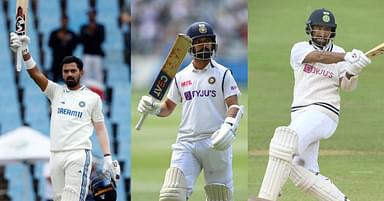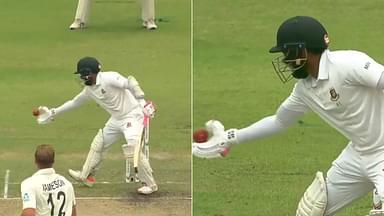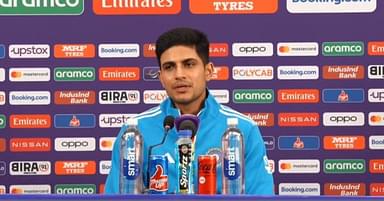India vs New Zealand overs left today: Fans can expect a riveting evening session in the first India vs New Zealand Test at Green Park.
Advertisement
During the fifth day of the first Test of the ongoing New Zealand’s tour of India in Kanpur, India all-rounder Ravindra Jadeja provided his team with a massive advantage after dismissing veteran New Zealand batter Ross Taylor cheaply.
It all happened on the first delivery of the 64th over when Taylor’s attempt of defending a Jadeja delivery found him wanting in front of the stumps. Jadeja, who was bowling from round the wicket, brought the ball in to Taylor with the angle.
With the batter failing to read the line of the ball, he didn’t even think of challenging the umpire’s decision via the DRS knowing that it wouldn’t have been of any use.
Coming in to bat at No. 5 in the 55th over, Taylor departed after scoring 2 (24) at the Green Park. In what is his second single-digit score of the match, the 37-year old player was dismissed by left-arm spinners in both innings of this match.
India vs New Zealand overs left today
New Zealand, who also lost their overnight pair of Will Somerville (36) and Tom Latham (52) in this session, need 159 more runs to win with six wickets in hand.
New Zealand, who had played just four overs yesterday, have already played 59.1 overs in the first two sessions on Day 5. With a minimum of 31.5 overs still remaining in the day’s play, New Zealand attempting for a victory needing over 5 runs per over on a Day 5 pitch is highly unlikely.
Readers must note that at least 98 overs are to be bowled in this innings. If time and light permits, the number could be increased. When it comes down to the last hour of a Test match, a minimum of 15 overs have to be bowled.
Can the @BLACKCAPS ‘hang-in there’ at #Kanpur 🤔 #1sttest #INDvsNZTestSeries pic.twitter.com/Lbqtd8F9mn
— Danny Morrison (@SteelyDan66) November 29, 2021
With Kane Williamson and his men looking to play out the last session of the match, the hosts will have the option of attacking them with tight lines and lengths backed by smart fielding placements.





![Cricketers Who Played First Test Match As Captain [FULL LIST]](https://cdn-wp.thesportsrush.com/2024/01/201ef095-first-test-match-as-captain.jpg?format=auto&w=384&q=75)

